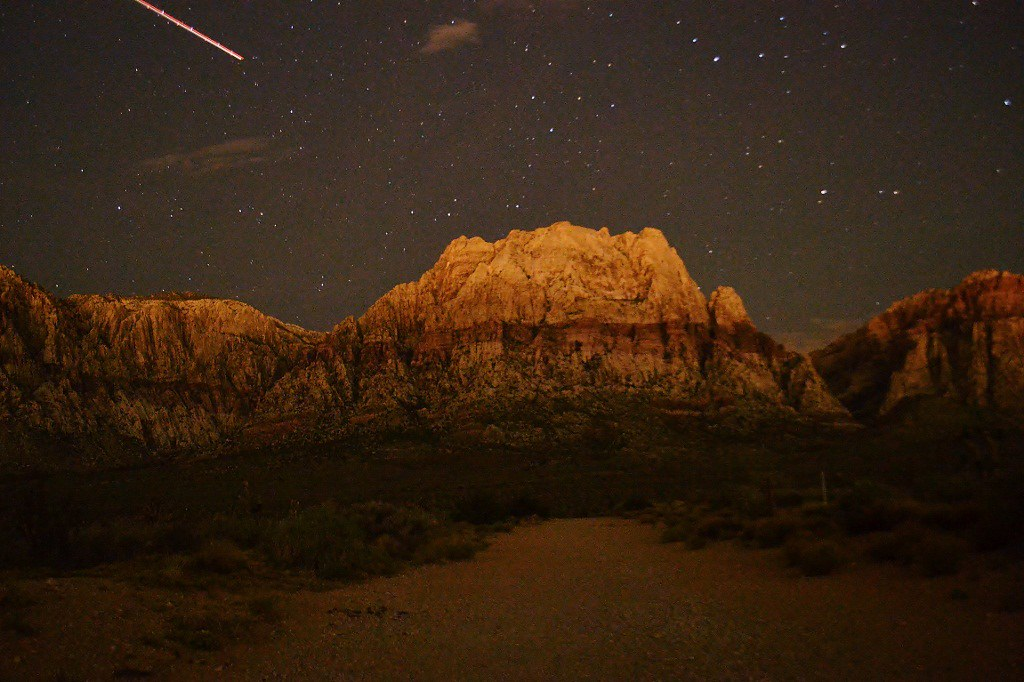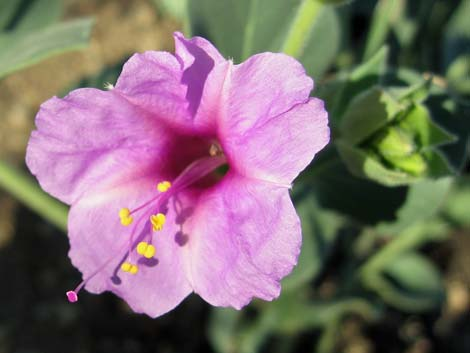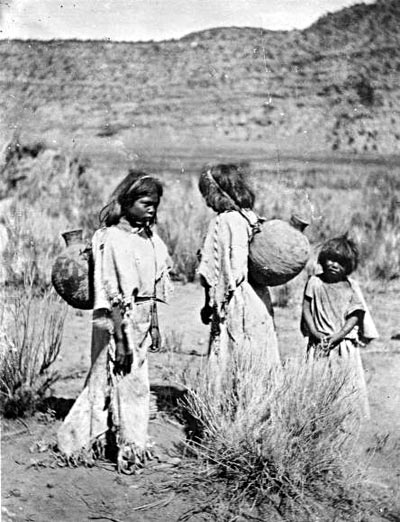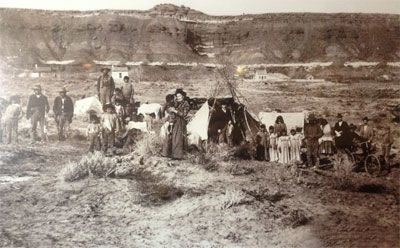Red Rock Canyon
On a typical day in the summer, Red Rock Canyon in Las Vegas, Nevada will usually reach over 100 °F. Yet during the winter, the climate reaches 30 to 40 °F and gets even colder at night just as any other New England state. Red Rock Canyon is just one portion of the Mojave Desert which reaches other parks such as Death Valley, Nevada, Joshua Tree, California and Bryce Canyon in Utah.
 Red Rock Canyon from Oak Creek trail
Red Rock Canyon from Oak Creek trail
Surprisingly the canyon holds over 600 plant species which native tribes in the area utilized for food or medicinal practices. For example; the Beavertail cactus was used for its smooth pads to help soothe abrasions. Pinyon nuts were heavily depended upon during the fall and Utah agave stalks were also harvested by natives as a nutritious food source. Other organisms within the ecosystem also depend upon the vegetation. Mule deer and bighorn sheep depended highly upon Cliffrose as their food source and these were valuable stock for natives to hunt. Hopi Natives used the Four o'clock flower for its medicinal properties and dye. They would boil it to making tea for pregnant women as well as tea to treat colic, eye infections, muscle soreness, swelling and many other ailments.

The Four o Clock flower
Paiute
The Paiute and their ancestors would typically live in the desert during the winter and migrated to the mountains during the spring and summer so that they could live within a reasonable climate and be able to easily navigate to gain resources for survival. As they were a nomadic tribe they would move along the red rocks from Nevada to California. As stated by Utah's Bryce Canyon website "Paiute lore reveals the belief that the enigmatic red rock hoodoos that distinguish Bryce Canyon were 'Evil Legend People' (To-when-an-ung-wa) who were turned to stone by the all-powerful Coyote spirit. The Paiute called these mysterious rock formations Anka-ku-was-a-wits, meaning the 'red painted faces.'”

Bryce Canyon
Most confrontation that happened between European settlers and the Paiute occurred because of limited resources. In addition to this, the Paiute and many other tribes were affected immensely by small pox. The government attempted to relocate the Paiute to a reservation in Oregon called Malheur Reservation which ultimately failed. The Northern Paiutes resisted against European influence but it eventually came to the point where the degradation of their land became too great. The Paiute and other neighboring tribes were forced into smaller colonies with one another and sought jobs administered by white men. The jobs would be in the city, on ranches or in other small businesses.

Paiute girls carrying water jugs

Shivwits Band Reservation Around 1899

